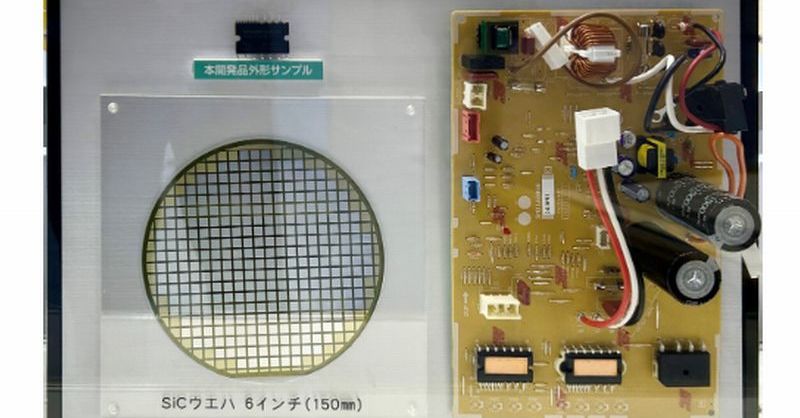SiC Power Modules: Revolutionizing Energy-Efficient Air Conditioning
The global demand for energy-efficient cooling solutions is surging, driven by rising temperatures and a growing awareness of environmental concerns. Traditional air conditioning systems often suffer from significant energy losses, contributing to high electricity bills and a larger carbon footprint. However, a groundbreaking technology is poised to change the game: SiC power modules. This article delves into how Silicon Carbide (SiC) power modules are revolutionizing air conditioning, offering superior energy efficiency and paving the way for a greener future.
What are SiC Power Modules?
Silicon Carbide (SiC) is a wide-bandgap semiconductor material offering significant advantages over traditional silicon (Si) in power electronics. SiC power modules leverage these benefits, resulting in:
- Higher Efficiency: SiC's superior switching speeds and lower on-resistance lead to significantly reduced energy losses during operation. This translates directly into lower energy consumption and reduced electricity bills for consumers.
- Smaller Size and Weight: SiC devices can achieve the same power output with a smaller physical footprint, leading to more compact and lightweight air conditioning units.
- Improved Reliability: SiC's inherent robustness results in more reliable and durable air conditioning systems with extended lifespans.
- Enhanced Thermal Performance: SiC's high thermal conductivity helps dissipate heat more efficiently, further improving the overall performance and reliability of the system.
How SiC Power Modules Improve Air Conditioning Efficiency
Traditional air conditioning systems rely on inverter technology for variable speed control, but SiC power modules take this to the next level. By minimizing switching losses, SiC enables:
- Precise Speed Control: More accurate control over the compressor's speed, optimizing energy consumption based on the cooling demand.
- Faster Response Times: Quicker adjustment to changing temperature requirements, resulting in improved comfort and reduced energy waste.
- Reduced Harmonics: SiC's superior switching characteristics contribute to cleaner power waveforms, reducing harmonic distortions and improving overall system efficiency.
The Environmental Impact of SiC in Air Conditioning
The adoption of SiC power modules in air conditioning systems contributes significantly to environmental sustainability by:
- Lowering Greenhouse Gas Emissions: Reduced energy consumption translates directly into lower greenhouse gas emissions, combating climate change.
- Conserving Resources: Improved efficiency reduces the overall demand for electricity generation, conserving valuable natural resources.
- Promoting Sustainable Cooling: SiC technology contributes to the development of more environmentally friendly and sustainable cooling solutions.
The Future of SiC in Cooling Technologies
The potential applications of SiC power modules extend beyond residential air conditioning. These modules are being increasingly integrated into:
- Commercial HVAC systems: Improving energy efficiency in large-scale cooling systems for buildings and industries.
- Data center cooling: Meeting the growing demand for energy-efficient cooling solutions in the data center industry.
- Electric vehicles' climate control: Providing efficient and reliable climate control for electric vehicles.
Challenges and Opportunities
While the benefits of SiC are compelling, several challenges remain:
- Higher initial cost: SiC power modules currently have a higher initial cost compared to silicon-based alternatives. However, the long-term energy savings often outweigh the initial investment.
- Supply chain limitations: The supply chain for SiC materials and devices is still developing, which may affect availability and pricing.
Despite these challenges, the advantages of SiC power modules are undeniable, presenting a significant opportunity for manufacturers and consumers alike. The ongoing research and development in SiC technology promise further improvements in efficiency, cost-effectiveness, and availability.
Conclusion: A Cooler, Greener Future with SiC
SiC power modules represent a significant leap forward in energy-efficient air conditioning. By reducing energy consumption, minimizing environmental impact, and improving reliability, they are paving the way for a cooler and greener future. As the technology continues to mature and costs decrease, the widespread adoption of SiC in air conditioning systems is expected to accelerate, contributing to a more sustainable world.
Call to Action: Learn more about the latest advancements in SiC power module technology and its applications in various cooling systems by exploring resources from industry leaders and research institutions. [Link to a relevant industry resource - Example: IEEE Xplore]
